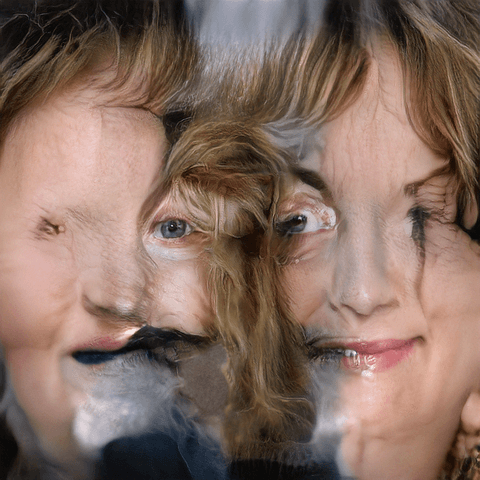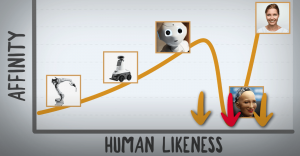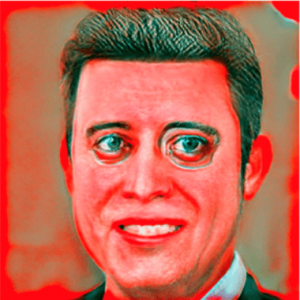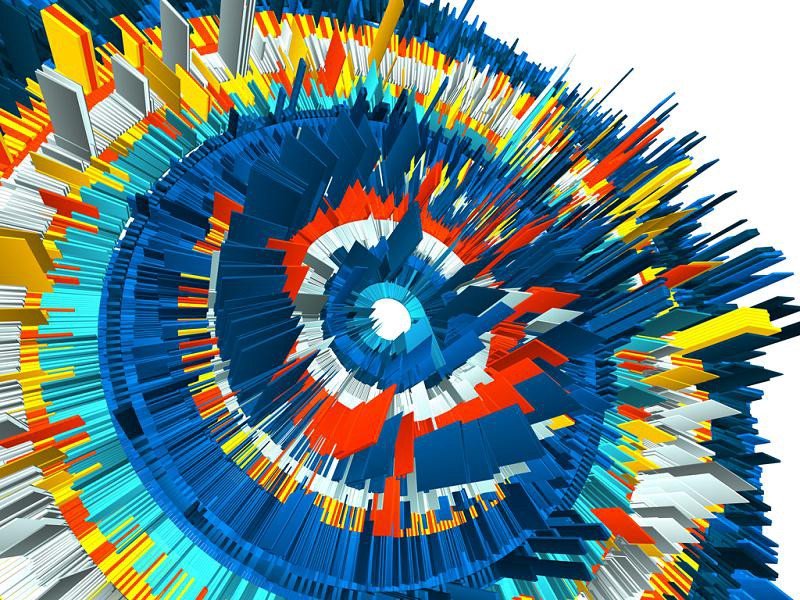Movement with Neurons
A quick recap of my sketch, I wanted to depict the movement of the non-linear and unpredictability element of fish movements. To make my idea possible, I used processing as my medium.
Research
I started by exploring the various behaviours and movements of the fishes influenced by their neurons’ connectivity. I felt that it is essential first to acquire the understanding of the fish mechanisms and the nature that comes along with it before I could start to digitalise it using processing. Besides that, I also explored various artist’s works to be inspired, especially on artwork that was created digitally.
Guiding Reference

Mandelbrot Fractal (1979) by Benoit Mandelbrot
One of the artworks that inspired me was Mandelbrot Fractal (1979) by Benoit Mandelbrot, which was one of the first computer graphics to display fractal geometric images using a computer algorithm. What it does is using a mathematical formula to create endless repeating patterns of aesthetic properties. This was something similar to my sketch idea, so I always referred to his methodology as guiding points throughout my experimentation with processing.
First iteration (Basic Mechanism)
I started with the basic mechanics that simulate the patterns of a flocking fish. The first iteration was solely focused on the basic mechanism of flocking behaviours using particles simulation. As this was the foundational block of the sketch, I felt that the rules have to be written in a simple manner such that my future self will be able to understand and make changes to the parameters easily.
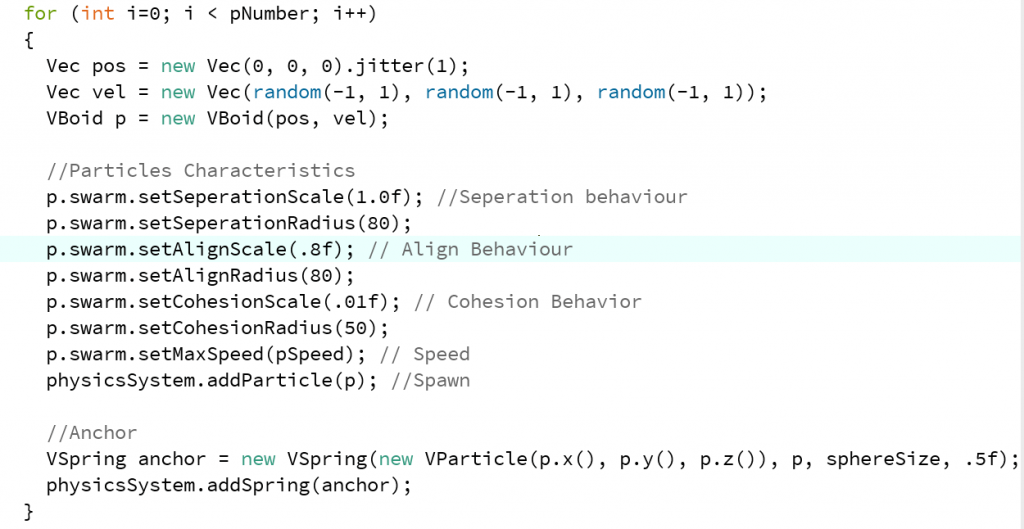
The basic rules/behaviour of the algorithm was created simplistically with only three actions.
- B1. Alignment: follow the heading of a local particle
- B2. Cohesion: Move towards the average position of a local particle
- B3. Separation: Avoid crowding local particle
Sketch
Critic
While the basic mechanism was achieved, I felt that it was too rigid. It did not have this perception of chaos and order. My rules were constraining the particle, such that there was less room for a mistake to occur, and to me, that was not generative enough.
Second Iteration (Order & Disorder)
For my second iteration, I focused on blending order and disorder to mimic the patterns similar to the biological life of fishes in the ocean. I looked upon some examples made using Unity and found a work that I could relate on back to my sketch.
Constrains
I tried to create something similar; however, I was constrained with the number of particles I can produce due to hardware limitations. Nonetheless, I still managed to tweak the particle behaviour to reflect something like the example.
Further Tweaks
Additionally, I took Professor Dejan suggestion and made further tweaks to the properties of the particles, to portray a more reactive and natural form of particle behaviour. Now the particles are less constrained, and it creates room for the particles to make mistakes. Furthermore, instead of one group of flocking fish, now there are multiple groups of fishes. However, it still lacks that visual aesthetic touch and immersive experience.
Sketch
Third Iteration (Aesthetics & Immersive)
My last iteration of the sketch was focused more on the visual aesthetics and immersive enhancement. One of the artworks that intrigued me was Artist Refik Anadol. I felt that his artwork was mesmerizing and something that I am inspired to achieve.
Further Tweaks

I explored the different variation of colours that can be used to complement the sketch, and I decided to implement a system that could change the colour of the particles over time. Furthermore, I have also ramped up the particle count to 2,500 (it was quite demanding for my computer). To add a final touch, I switched my sketch from 2D to 3D.
Sketch
Strong & Weak Aspects of The Finished Work
Weak Aspects
There were two stumbling blocks that I felt restricted in my explorative sketch. First, I was limited by my computer processing capabilities. As much as I want to render 100,000 particles simulation to create a visually appealing artwork like Artist Refik Anadol, I couldn’t expand my sketch beyond what my computer is capable of producing. Perhaps is the lack of understanding of how processing works behind the scene, such as how the algorithm is processed.
Next, I couldn’t achieve some suggestion by Prof, as I was limited to the library functions in Processing. One of the suggestions was to create a “predator” particle that could influence the dynamic of the particle’s behaviour.
However, I could not create the “predator” particle due to frequent crash when I tried to generate two separate particle systems (One for normal fish, Another for Predator).
Strong Aspects


The finalised work was less rigid and dull as compared to the first iteration, in terms of aesthetics and randomness. There was an evolution in terms of the behaviour of the particles; the algorithm is now optimised for particles to make mistakes and in a sense, make the particle appear alive and natural. Also, the system is built such that countless possible variations can be produced with just a tweak to the parameters of the code.
What I have learned in the process.
Ironically, I learnt that generative art is neither programming nor art. Generative art is the meeting point between the two disciplines; it’s the discipline of taking logical, systematic and rigid processes and subverting them into illogical, unpredictable and expressive results.
Therefore, I have learnt to remove this logical thinking that I had previously, to be more flexible with my ideas and exploration. Throughout the process, I also learnt to explore with various artworks, and just be inspired and open-minded to different works on the internet. Most importantly, incorporate the different ideas by the various artists into my sketch.
Everything else that was important.
During the guest talk by Professor Vladimir Todorovic, I raised the question with regards to finding the fine line between abstract and concrete, and he mentioned that there is ‘no perfect fine line between abstract and concrete’. I tried to relate this to my exploratory sketch process to understand what he meant.
Indeed, the process has shown me that order and chaos, simplicity and complexity, abstract and concrete aren’t necessarily the opposite ends of a spectrum. They can be easily intertwined. However, at the same time, we have to be careful not to stray too far into one spectrum or the other. Thus, I find that it is crucial to find this balance when we are creating generative pieces.
A Possible Generative Sketch Idea
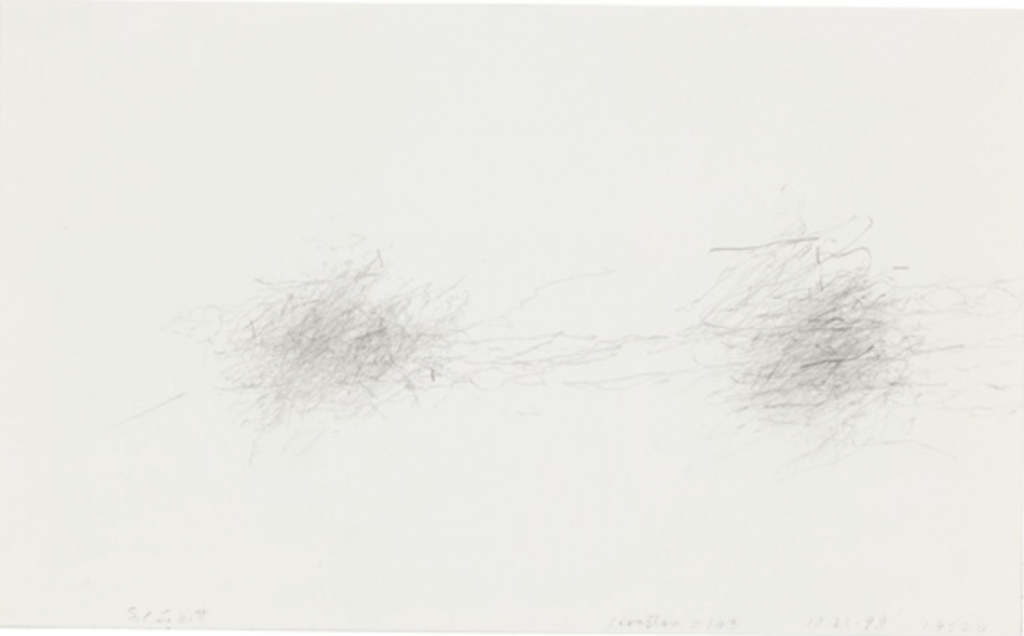
Moving forward, I would like to explore further the use of particle movement to create abstract drawings, similar to William Anastasi’s subway drawings.
